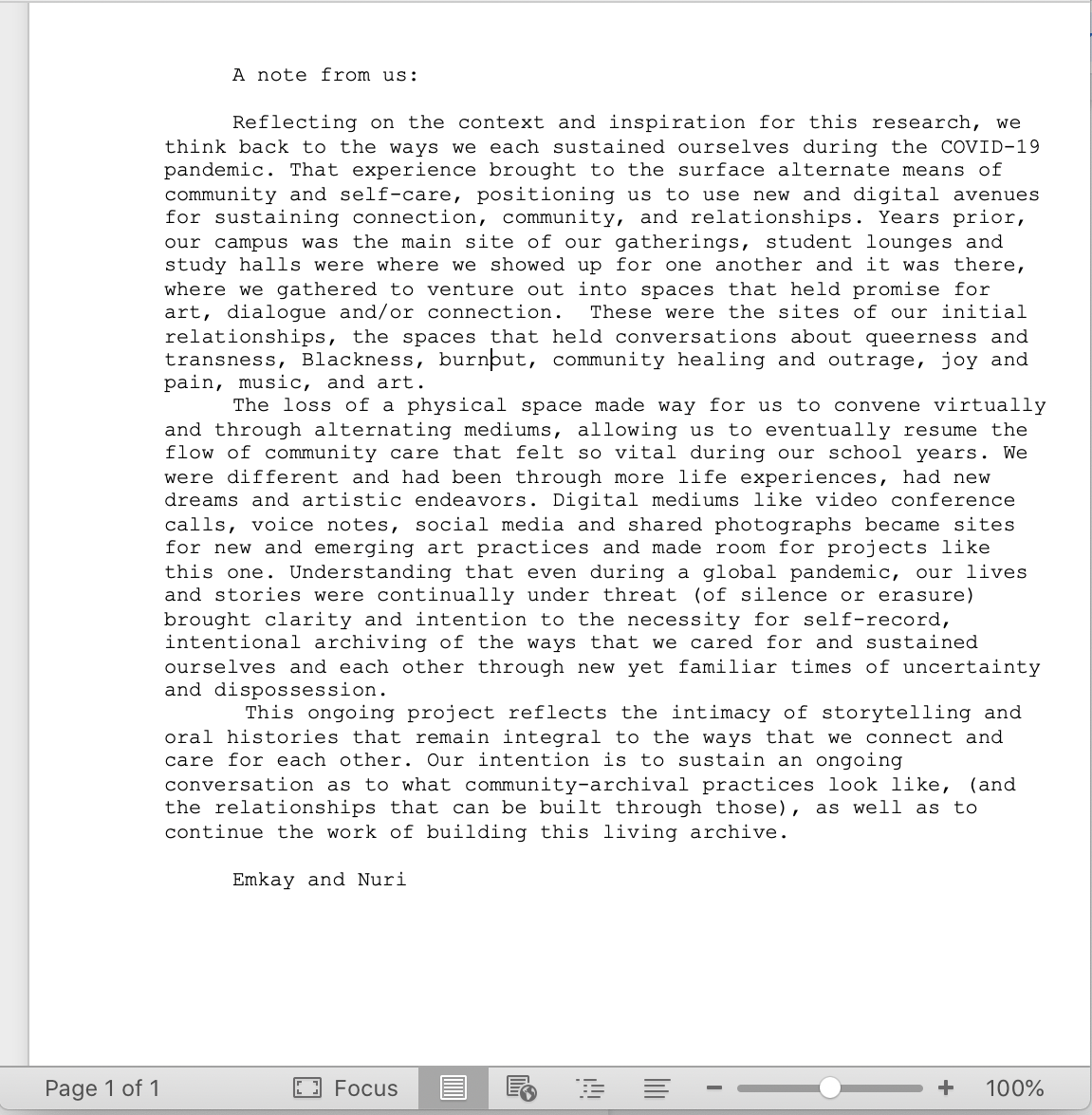Towards a Living Memory
ARTISTS: EMKAY ADJEI-MANU & NURI MAHADERE
Artists Note
We want to include a special note of gratitude to our community of participants, without whom this project cannot exist. The intention, care and vulnerability shown in your contribution is received with deep respect and appreciation. To share your voice and speak from a personal space in service of community is invaluable. We hope to do justice to the love, life and wisdom that is represented in each of your voice notes.

How do Black queer, trans and gender-expansive people practice and sustain the act of survival as it relates to experiences of displacement, dispossession, and/or disembodiment?
How do we tend to ourselves as Black people of queer, trans, and gender-expansive experience? Where do we go to seek out home and belonging? How have we been tending to ourselves and one another? This research is part of a larger undertaking; it’s a careful and intentional collecting of stories that have been overlooked. The asking and telling of our lived experiences follows a legacy of storytelling that serves to record, remember, and pass down our means of survival. It follows in the footsteps of a Black feminist tradition of working from the margins—of society, academia, archival practice and history-making—and bringing the stories and experiences of our community to a new centre. Digital and oral archives are the tools we use to bridge the gaps in our history. These voice notes are a living memory of our collective and individual survival.